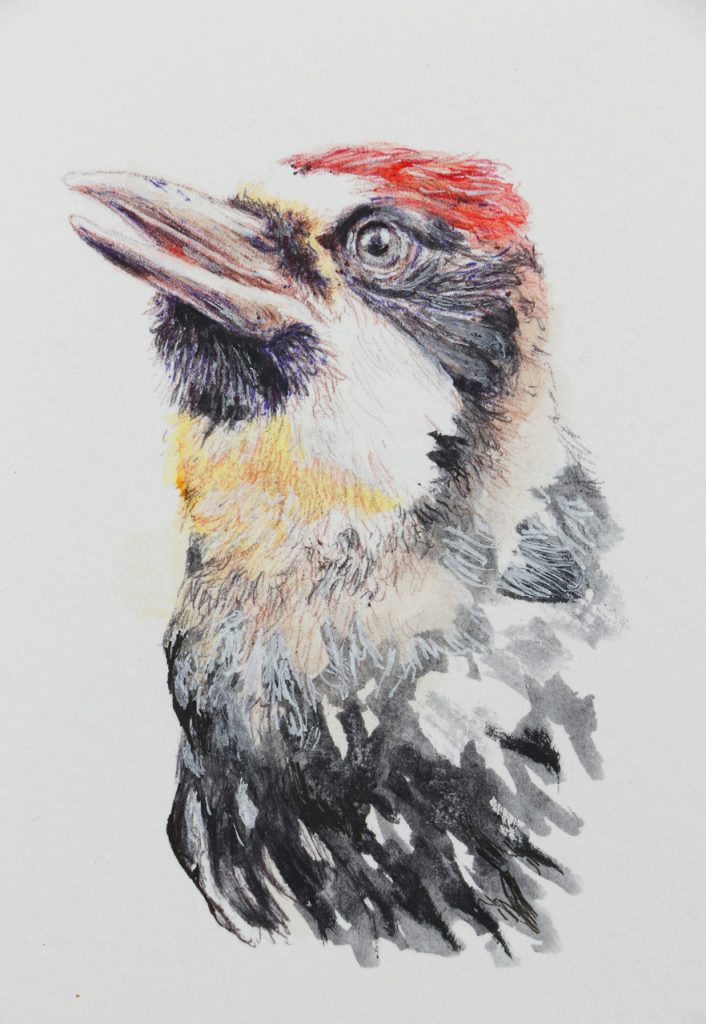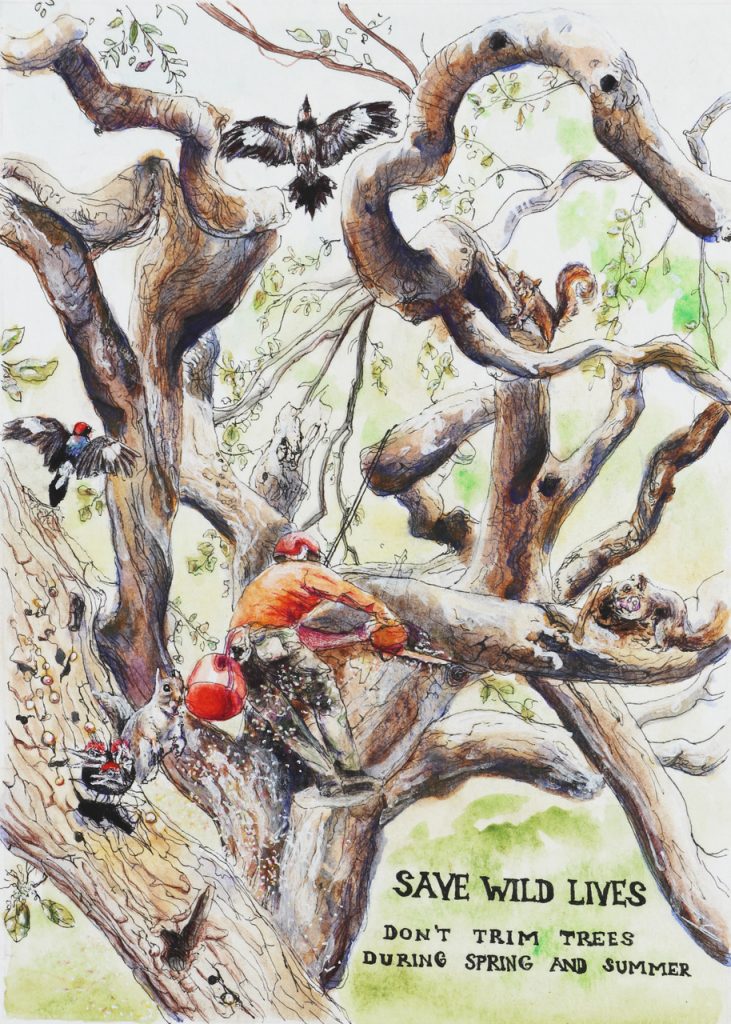Spring and Summer Tree Care and Wildlife Safety
by Claire Garvais and Emily Komessar

It’s Baby Season! Hundreds of owlets, squirrels, woodpeckers, and hummingbirds are nice and cozy in nests of all shapes and sizes throughout Santa Barbara County. Some of these babies will fall prey to forces of nature; they may fall out of their nests early or be harassed by natural predators. Unfortunately, the safety of many of these babies will be compromised due to a simple yearly practice: tree trimming.
Not all nests are obvious arrays of twigs and leaves; some animals, such as woodpeckers and fox squirrels, are cavity nesters, meaning they nest in holes in trees. Hummingbirds design their tiny nests to fit eggs the size of jelly beans. Dozens of other songbird species make a concerted effort to camouflage their nests from predators (and humans).
All these nests can be very hard to spot, and are easily knocked down by trimming accouterments. Even if the nest is not affected, mothers will often flee from their nests due to the buzz of chainsaws, leaving behind orphaned baby birds and mammals. For these reasons, the Santa Barbara Wildlife Care Network advises citizens of Santa Barbara County to only trim trees between September 1st and January 1st.
However, we understand that tree trimming practices can be important for tree health and public safety, and is sometimes unavoidable in spring and summer. In these situations, we would recommend making sure there are no nesting animals in the tree(s) you wish to be trimmed. Here’s how to tell if there may be a nest nearby:
Birds flying back and forth repeatedly. Adults may be gathering nesting material, such as small twigs, feathers, or animal fur. They may also be gathering food, such as bugs or berries. Watch where they fly. If they are flying back and forth to one location, this is likely a nesting area.

Animals entering holes in trees. Cavity nests can be the most difficult to observe. If you see woodpeckers or fox squirrels entering a tree cavity, try to look into the cavity with a mirror on a stick to see whether there’s a nest. Be slow and proceed with caution: you never know what may jump out!
Aggressive defenders. Parents guard their nests closely. If you see birds getting into scuffles, chances are there is a nest nearby.
Listen for baby bird peeps.
If you do find a nest, and still believe it necessary to get your tree(s) trimmed due to safety reasons, we recommend you or your arborist call us at the Santa Barbara Wildlife Care Network for advice on how to handle the process. You can reach our helpline at (805) 681-1080. We are happy to help and we understand the nuances of this issue.
Disturbing nests can also yield legal ramifications. Under Fish and Game Code §3503, “it is unlawful to take, possess, or needlessly destroy the nest or eggs of any bird” unless the Fish and Game Code or its implementing regulations provide otherwise. For more information on permit requirements for human activity that can affect birds, please visit https://www.wildlife.ca.gov/Conservation/Environmental-Review. To report violations of these regulations, like people illegally taking birds and wildlife, call the CalTIP hotline 1-888-334-2258, or see https://www.wildlife.ca.gov/enforcement/caltip.
Your diligence and care will help save baby wild lives and help us all live in harmony with our wild neighbors.
The Santa Barbara Wildlife Care Network is a nonprofit organization that rescues, rehabilitates, and releases wildlife in need in Santa Barbara and Ventura Counties. For more information, please visit the Santa Barbara Wildlife Care Network’s website at www.sbwcn.org or give us a call at (805) 681-1080 for wildlife emergencies, questions, or advice.





